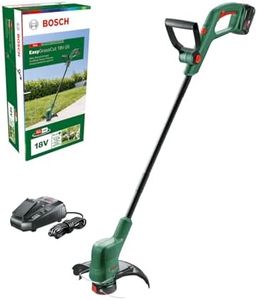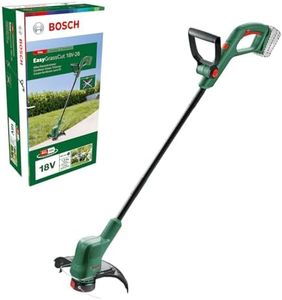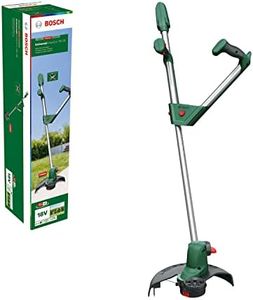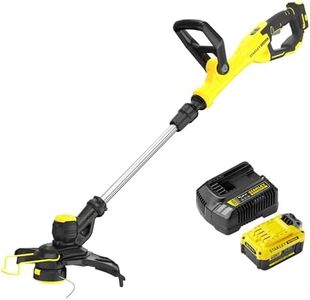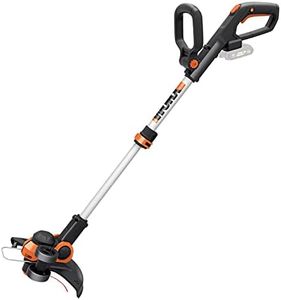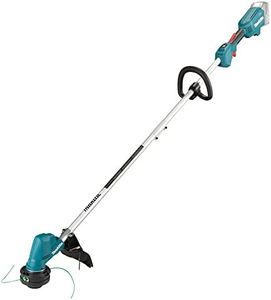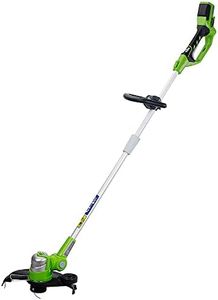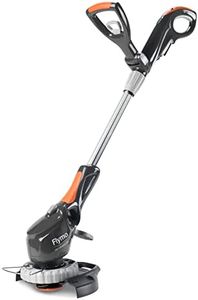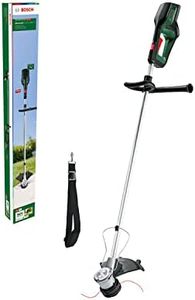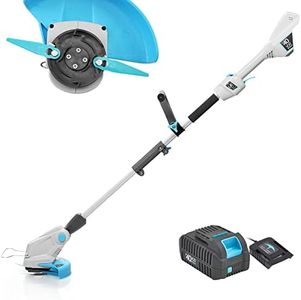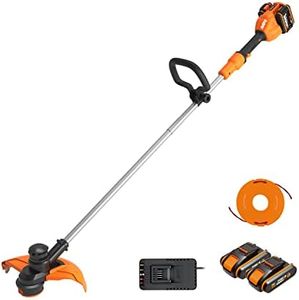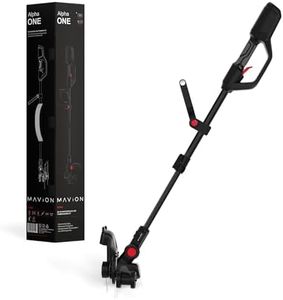We Use CookiesWe use cookies to enhance the security, performance,
functionality and for analytical and promotional activities. By continuing to browse this site you
are agreeing to our privacy policy
10 Best Cordless Line Trimmer
From leading brands and best sellers available on the web.Buying Guide for the Best Cordless Line Trimmer
Choosing the right cordless line trimmer can make your yard maintenance much easier and more enjoyable. Cordless line trimmers are powered by rechargeable batteries, freeing you from the hassle of cords and making them convenient for small to medium-sized lawns. When selecting a trimmer, it's important to consider the size of your garden, the type of vegetation you'll be tackling, and how comfortable you want the trimmer to feel during use. Understanding the key specifications will help you find a model that suits your needs and ensures efficient, safe trimming.Battery Voltage & CapacityBattery voltage and capacity determine how powerful your trimmer is and how long it will run before needing a recharge. Higher voltage batteries (like 36V or 40V) generally offer more power, which is useful for tackling tougher weeds or larger areas, while lower voltages (around 18V or 20V) are best for lighter tasks in small gardens. Battery capacity, measured in ampere-hours (Ah), affects run time; a higher Ah means the trimmer will last longer per charge. For small tidy lawns, a lower voltage and capacity may suffice, but for larger or more unruly gardens, look for higher values.
Cutting WidthThis refers to how wide a path the trimmer can clear in one pass. It's typically measured in centimeters or inches. A wider cutting width lets you trim more area quickly, which is useful for bigger spaces, but can make the tool heavier or harder to maneuver in tight areas. Smaller cutting widths are better suited for precision trimming around garden beds or paths. Think about your yard's layout: if you have wide open space, a larger width saves time; for detailed edging or tight spots, a smaller width offers better control.
Line Feed SystemThe line feed system describes how the trimmer's cutting line advances as it wears down. Manual feed systems require you to stop and pull more line out by hand, bump feed systems let you tap the trimmer head on the ground to release more line, and automatic feed systems release line automatically as needed. Automatic feeds are very convenient and save time, especially for beginners or those who want hassle-free operation, but can sometimes use up line faster. If you value simplicity or expect frequent stops to adjust line to be annoying, go for bump feed or automatic feed.
Weight & ErgonomicsThe weight of a line trimmer affects how comfortable it is to use, especially for longer periods. Heavier trimmers may offer more power but can quickly cause fatigue. Adjustable handles and balanced designs make handling easier. If you have limited strength or plan to use the trimmer frequently, a lightweight model with good ergonomics (like an adjustable handle or telescopic shaft) is best. Heavier models suit those needing more power for tough jobs but can be tiring if used for a long time.
Shaft DesignThe shaft is the long part of the trimmer and it comes in straight or curved designs. Straight shafts are better for reaching under bushes and for larger people, as they provide more reach, while curved shafts can be lighter and easier to control at close range, making them more comfortable for shorter users or precise edging. Consider your height and the types of spaces in your yard—tough-to-reach places favor straight shafts, while easy maneuvering in tight spots favors curved designs.
Noise and VibrationCordless trimmers are generally quieter than gas-powered ones, but there can still be differences among models in terms of noise and vibration. Less noise is better for peaceful neighborhoods and more comfortable use without ear protection, while reduced vibration can minimize fatigue and strain during extended use. If you’re sensitive to loud sounds or plan on long trimming sessions, look for trimmers marketed as low-noise and low-vibration.
